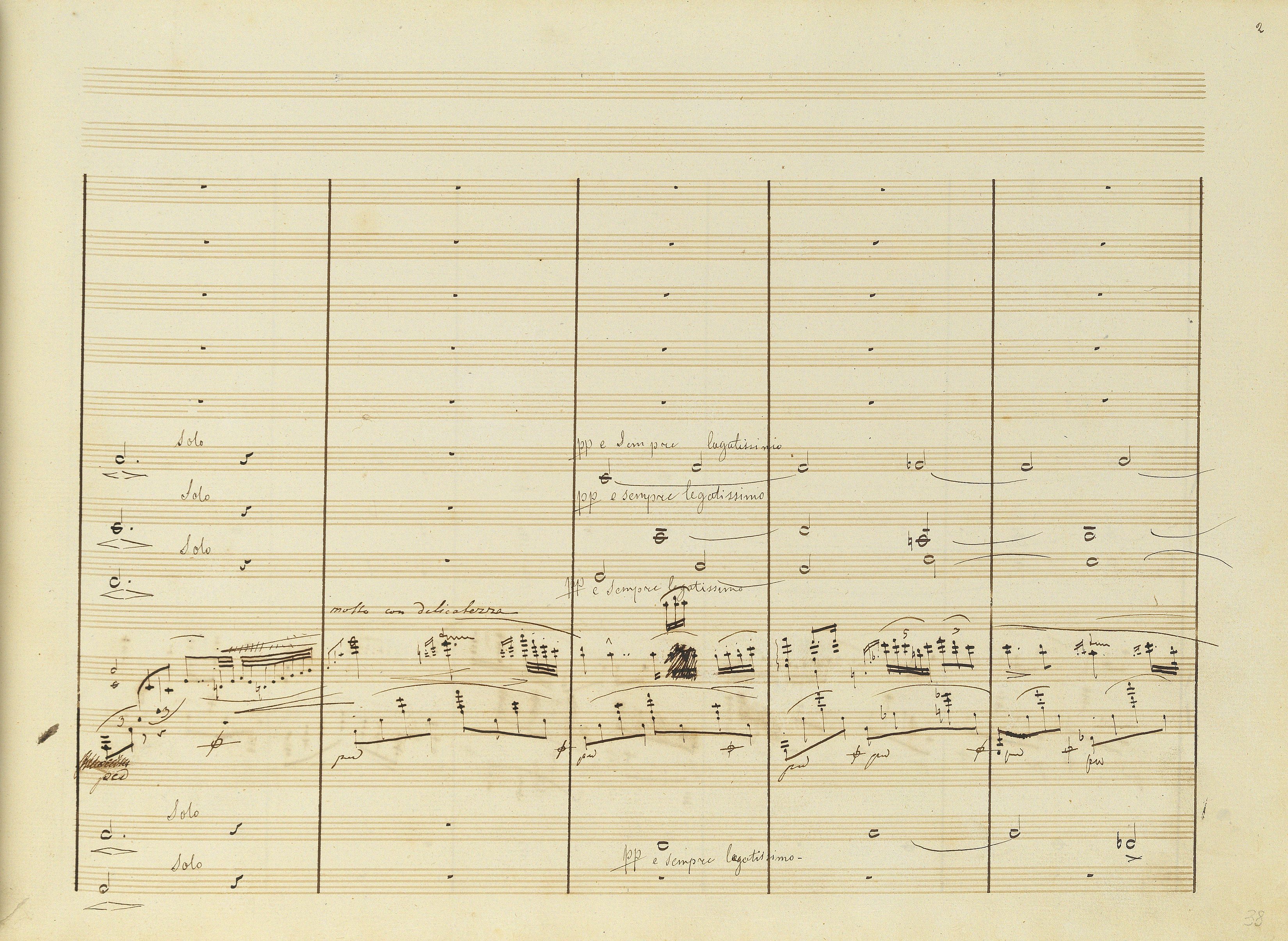




|
Rhythm in A |
|

|
Rhythm in GE |
|

|
Rhythm in FE |
|

|
Interpretation of FE suggested by the editors |
|

|
Rhythm in EE |
|

|
Interpretation of A suggested by the editors |
All source notations of the 2nd half of the bar are erroneous or unclear, however, none of them can be corrected in a way that would not be questioned.
- In A the 3rd beat of the bar includes 9 demisemiquavers.
- In GE the introduction of a smaller font to write demisemiquavers does not have an impact on the rhythmic values and seems to be an arbitrary decision of the engraver: he could have noticed a difference between the size of note heads in the 1st and 2nd halves of the bar. It appears even more likely when considering his blunder in the first Tutti in the 1st movement of the Concerto; following that incident, he must have paid attention even to the slightest differences in the size of note heads.
- The corrected notation of FE, which interpreted literally is at the very least unclear, could have been a result of that mistake. Since the proofreading of FE was probably performed on Chopin's demand, one has to consider what its intended result could have been. The suggested solution is both formally correct and very close to the genuine source notation.
- It is hard to guess what the idea behind the actions of the reviser of EE was.
In this situation, we base the main text on the version of A which, in spite of its inaccuracies, seems to be the most reliable, as far as the authenticity is concerned. Out of two natural possibilities of correcting the mistake (changing two demisemiquavers to hemidemisemiquavers or deleting one of the dots extending the e 1 quaver) we choose the second, giving a smoother development of the figuration introducing the main theme. We suggest a modified version of FE as an alternative version.
1 quaver) we choose the second, giving a smoother development of the figuration introducing the main theme. We suggest a modified version of FE as an alternative version.
Compare the passage in the sources »
category imprint: Interpretations within context; Differences between sources
issues: Inaccuracies in GE, Errors in GE, Rhythmic errors, Errors of A, Authentic corrections of FE
notation: Rhythm

